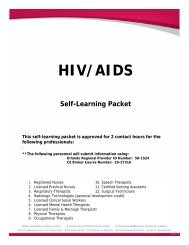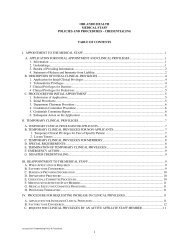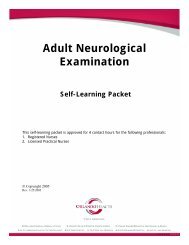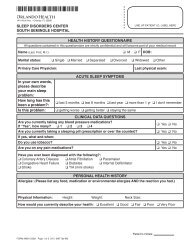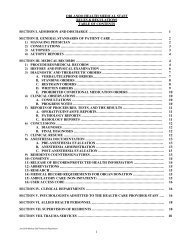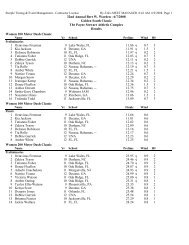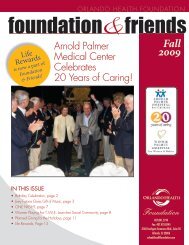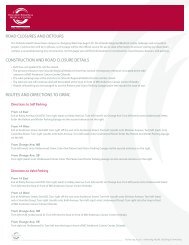Introduction to CV Pharmacology - Orlando Health
Introduction to CV Pharmacology - Orlando Health
Introduction to CV Pharmacology - Orlando Health
Create successful ePaper yourself
Turn your PDF publications into a flip-book with our unique Google optimized e-Paper software.
<strong>CV</strong> <strong>Pharmacology</strong><br />
Measurement of the QTI in stable sinus rhythm<br />
The QTI is measured from the beginning of depolarization of the QRS complex <strong>to</strong> the end of the<br />
T wave representing repolarization. The QTI may be short, normal, or prolonged (>.44).<br />
Although a short QTI may suggest hypercalcemia, it is often difficult clinically <strong>to</strong> distinguish<br />
between a normal or short QTI. The literature suggests that healthcare providers should not be as<br />
concerned with QT shortening as with prolongation. (Grauer, 1998). The recommended lead for<br />
measurement is lead II.<br />
Note: If a U wave is present, it is not <strong>to</strong> be included in the measurement. The possible problem<br />
of distinguishing the T wave from a U wave can be minimized by measuring the QTI in lead II.<br />
Example of QTI measurement (with permission Grauer, 1998)<br />
QTI ends here<br />
where the T-wave<br />
returns <strong>to</strong> baseline.<br />
Another method <strong>to</strong> determine if a QTI is prolonged in sinus rhythms (< 100 beats<br />
per minute) is <strong>to</strong> observe the R-R interval. The QTI is probably prolonged if it<br />
exceeds more than half of the R-R interval.<br />
Example of evaluating R-R interval. (with permission Grauer, 1998)<br />
© 2010 <strong>Orlando</strong> <strong>Health</strong>, Education & Development 13



